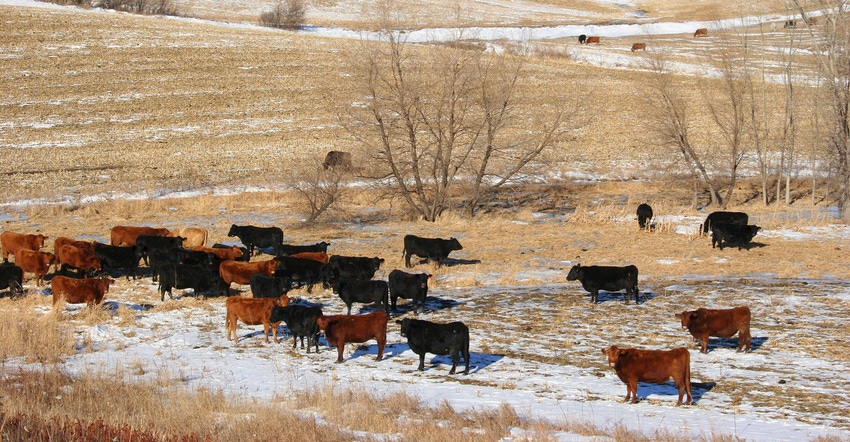March 7, 2019

Even though it’s still cold outside, it’s not too early to think about getting pastures ready for spring.
If stands look thin, frost seeding could be an option.
According to Penn State Extension, frost seeding is less expensive than tillage and can be as effective, so long as it’s done at the right time and managed properly.
Frost seeding works best when the soil “honeycombs” — that is, as temperatures warm up above freezing during the day but drop below freezing at night, the seeds have an opportunity to drop below the surface.
Trampling livestock can also work to obtain good soil-to-seed contact.
Here are five other steps from Penn State Extension and University of Vermont Extension to ensure success with frost seeding:
1. Remove vegetation before seeding. Seed-to-soil contact is critical to the success of frost seeding. The best candidate for frost seeding is the “run out” field, areas with bare or exposed soil.
Fields with a thick layer will not frost-seed well because the seed will not easily gain contact with the soil.
2. Seed early in the season. The best time to seed is early in spring after the snow is gone but while the ground is still frozen. The repeated freezing and thawing will cause some of the seed to fall into soil cracks and germinate.
Frost seeding can be done over a thin layer of snow, but rapid snowmelt can cause the seed to be washed off.
Frost seeding does not work on sandy soils where there is no swelling and shrinking associated with the freeze-thaw cycle.
Using a chain drag or running over the field lightly with a disk can help open the stand, too.
3. Do it early in the morning. Early morning frost seeding, before the soil surface begins to thaw, is recommended. If the soil surface is "slimy,” wait to seed until you get another morning when the soil has frozen again.
4. Legumes are better than grass. Legumes have a much better success rate than grasses. Red clover is the species most recommended for frost seeding because of seedling vigor and wide tolerance to pH, fertility, drainage and drought.
Getting a good stand of grass from frost seeding is much more difficult. Research from the University of Wisconsin showed that perennial ryegrass and orchardgrass got the best results.
Also, if you plant to frost-seed grass, you will need to make a separate pass with the seeder as the grasses will not spread as far as legumes.
5. Use the right equipment and method. Frost seeding can be done with any type of a broadcast seeder. This can be done by hand, tractor 3-point hitch or ATV.
If using a broadcast seeder, determine width to avoid seed overlapping.
A no-till drill can also be used to frost seed, but this also increases the number of trips across a field.
Source: Penn State University, which is solely responsible for the information provided and are wholly owned by the source. Informa Business Media and all its subsidiaries are not responsible for any of the content contained in this information asset.
You May Also Like




